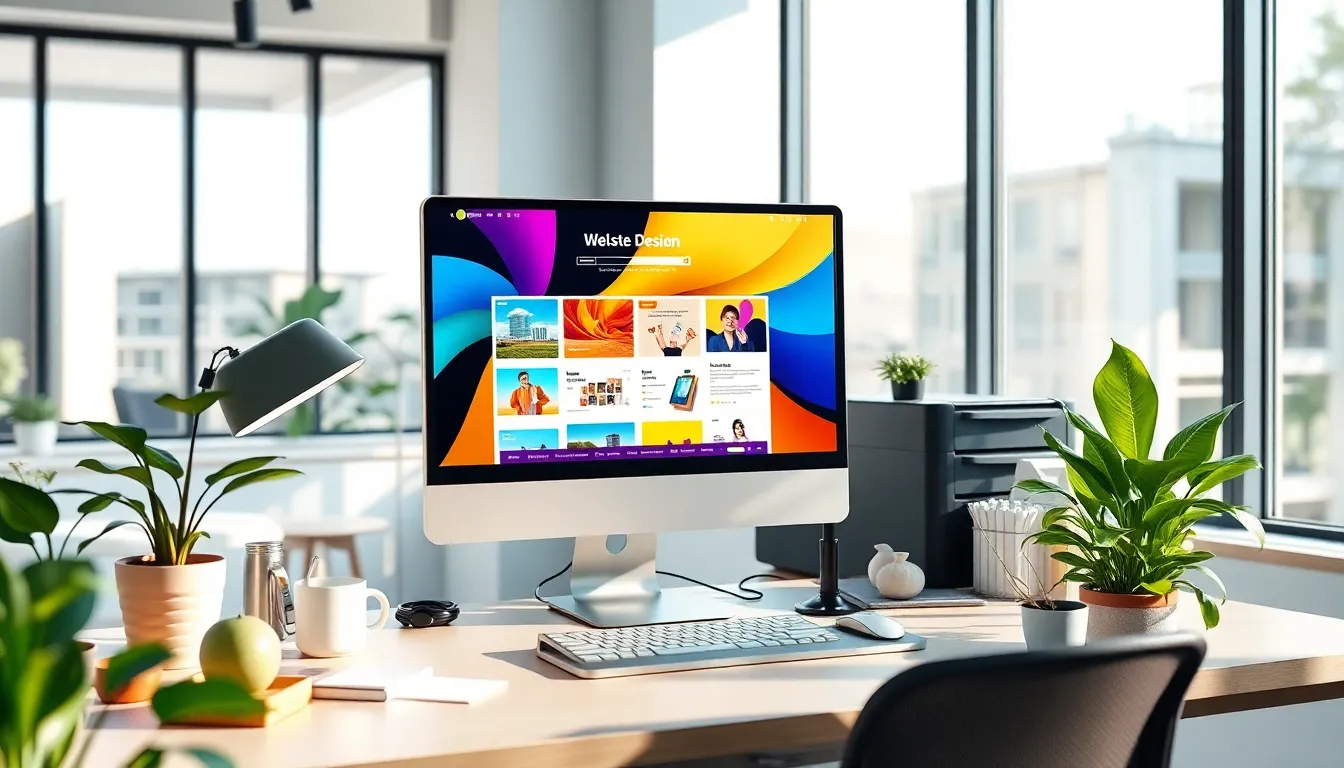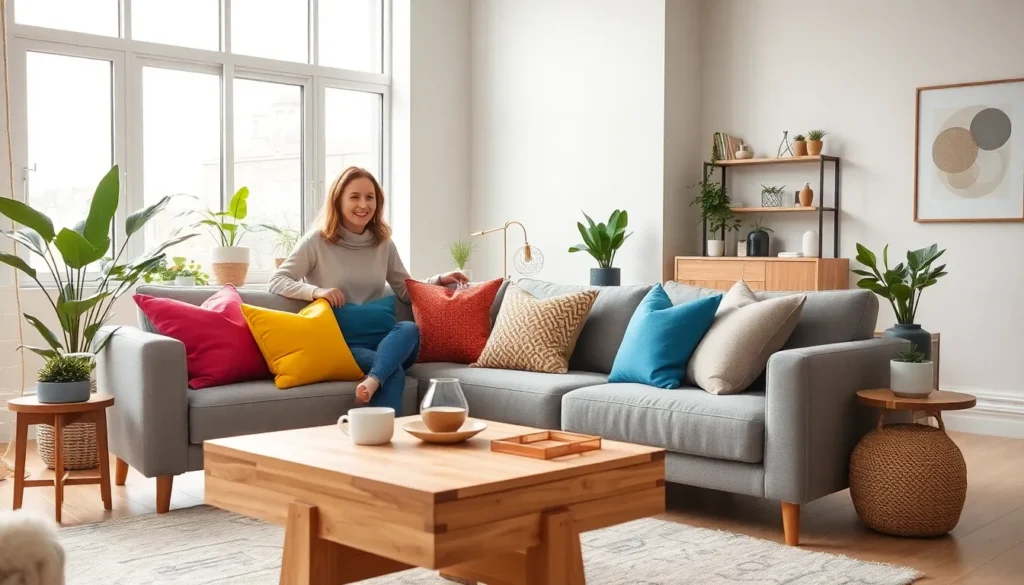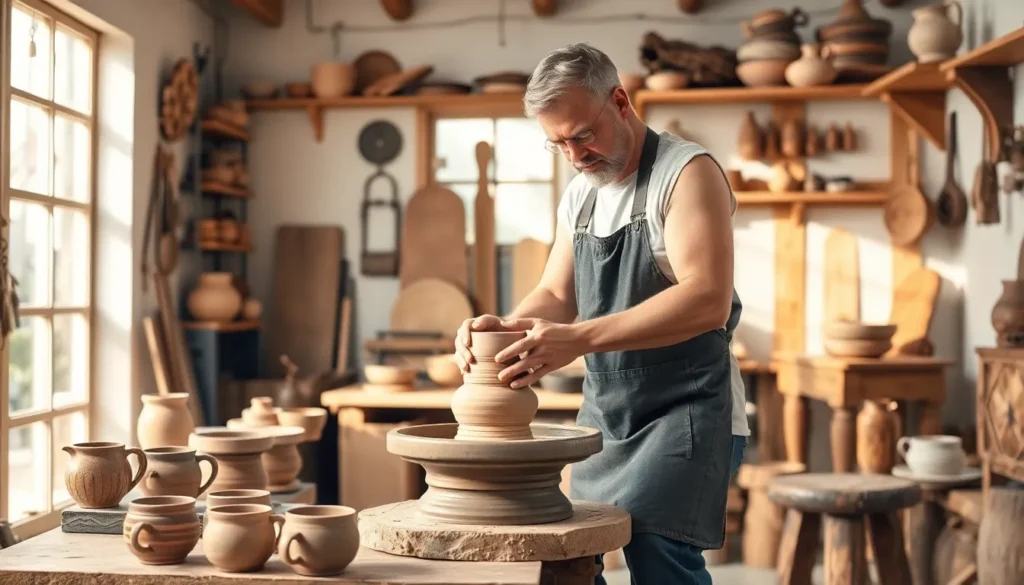In a world where first impressions count more than ever, site design concepts are the secret sauce to turning casual browsers into loyal fans. It’s like the difference between inviting someone into a cozy café versus a cluttered garage—one feels welcoming while the other? Not so much. A well-thought-out design can make users feel right at home, guiding them effortlessly through your digital space.
Table of Contents
ToggleUnderstanding Site Design Concepts
Site design concepts play a crucial role in creating positive experiences for users. An effective design not only enhances navigation but also fosters engagement and reliability.
Importance of Site Design
Site design significantly influences user behavior. A well-structured layout captures attention, ensuring visitors remain on the page longer. Fast load times contribute to lower bounce rates, while aesthetic appeal encourages exploration. Positive visual elements create a sense of trust, encouraging users to share personal information. Ultimately, successful site design drives conversions and builds brand loyalty.
Key Principles of Site Design
Key principles guide effective site design. Consistency across colors, fonts, and styles creates a cohesive brand identity. Intuitive navigation aids users in finding information quickly, enhancing their overall experience. Responsive design ensures optimal performance on various devices, accommodating user preferences. Accessibility features cater to diverse audiences, broadening engagement. Usability testing uncovers potential issues, allowing for timely adjustments. These principles collectively enhance user satisfaction and elevate a site’s success.
Types of Site Design Concepts

Various site design concepts exist, catering to different user needs and preferences. Understanding these concepts enhances the ability to create engaging and effective websites.
Traditional vs. Modern Design
Traditional design focuses on established principles and familiar layouts. It often employs grid systems, classic typography, and straightforward navigation. Users appreciate the predictability this approach provides. In contrast, modern design embraces innovation and experimentation. It features bold colors, unique layouts, and interactive elements. This design captivates users, fostering engagement through dynamic visuals. Both styles serve distinct purposes; traditional design conveys trust, while modern design encourages exploration.
Sustainable Design Approaches
Sustainable design approaches prioritize environmental considerations in web development. They include energy-efficient coding, optimized images, and renewable hosting solutions. By minimizing resource consumption, these methods enhance site performance and user experience. Users today value sustainability and are more likely to engage with eco-friendly brands. Incorporating features like minimalistic designs and streamlined user journeys contributes to a smaller carbon footprint. Consequently, adopting sustainable practices becomes crucial for designers aiming to attract environmentally conscious audiences.
Elements of Effective Site Design
Effective site design combines various elements to create a user-friendly experience. Core components include layout, color, and overall aesthetics, each contributing to a functional and engaging website.
Layout and Spatial Planning
A well-structured layout promotes intuitive navigation and enhances user experience. Spatial planning allocates distinct areas for essential elements, minimizing clutter and emphasizing important content. Grid systems guide designers in aligning text, images, and interactive features, resulting in a coherent visual flow. Strategic placement of calls to action enables visitors to engage with the site easily. Consistency in spacing and alignment fosters a professional appearance, reducing cognitive load for users. Users appreciate when sections are visually distinct, allowing them to absorb information without confusion.
Color and Aesthetics
Color choices significantly impact user perception and emotional response. Effective color palettes create visual harmony, enhancing brand recognition. Designers often select complementary colors to evoke specific feelings, such as trust or excitement. Aesthetic appeal attracts users, encouraging longer visits and exploration. The contrast in color between text and background ensures readability, making content accessible to all. Implementing branding colors throughout reinforces the site’s identity, while also appealing to users’ preferences. Visual elements like images and icons further enhance the overall design, creating a cohesive and inviting atmosphere.
Challenges in Site Design
Navigating site design encompasses various challenges that designers face. Two critical areas impact the overall process significantly.
Budget Constraints
Budget constraints often limit design choices and solutions. Designers must consider resource allocation for aspects like software, hosting, and design tools. An effective plan includes prioritizing essential features and balancing aesthetic appeal with functionality. Cost-effective options exist, such as leveraging open-source tools and templates. Streamlining processes helps reduce expenses while still achieving a professional look. Creative approaches allow teams to deliver quality designs without overspending. Regularly reassessing budget priorities ensures that critical design elements receive the necessary funding, leading to successful outcomes.
Regulatory Compliance
Regulatory compliance stands as another significant challenge in site design. Designers must understand various laws and guidelines, including accessibility standards and data protection regulations. Adhering to the Americans with Disabilities Act (ADA) ensures that websites remain usable for individuals with disabilities. Familiarity with the General Data Protection Regulation (GDPR) helps secure users’ personal data, building trust. Integrating compliance measures from the beginning provides smoother implementation and avoids potential legal issues. Regular audits and updates keep designs aligned with evolving regulations, ensuring ongoing compliance and user satisfaction.
Site design concepts play a crucial role in shaping user experiences and driving engagement. By prioritizing elements like usability, aesthetics, and accessibility, designers can create environments that resonate with visitors. Embracing both traditional and modern styles allows for a balance between familiarity and innovation, catering to diverse user preferences.
Moreover, integrating sustainable practices not only enhances performance but also attracts eco-conscious users. As designers navigate challenges such as budget constraints and regulatory compliance, strategic planning becomes essential. Ultimately, a thoughtful approach to site design fosters trust and loyalty, turning casual visitors into dedicated fans.









